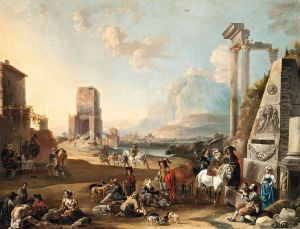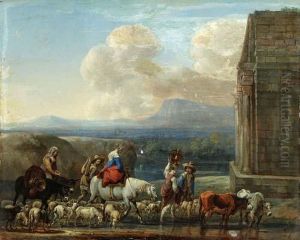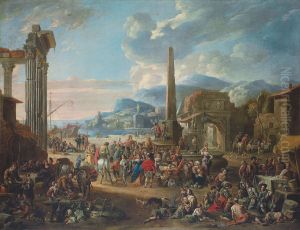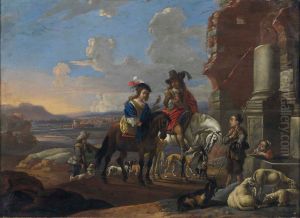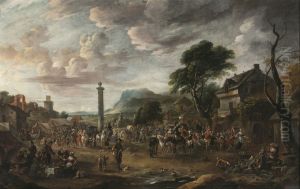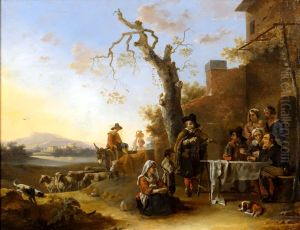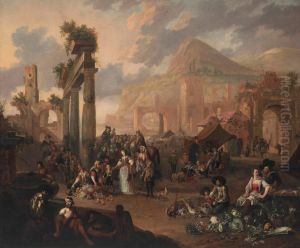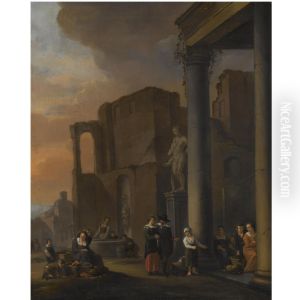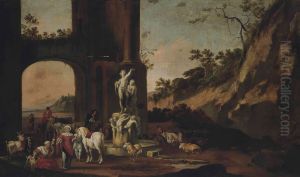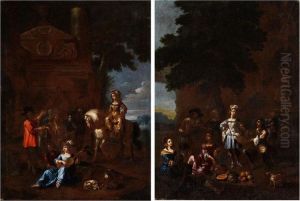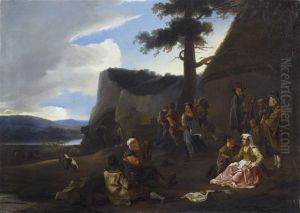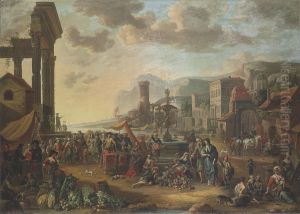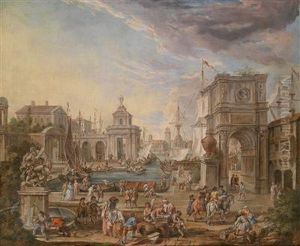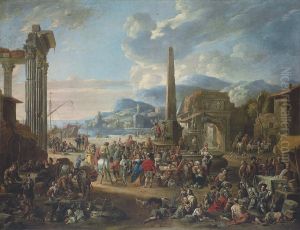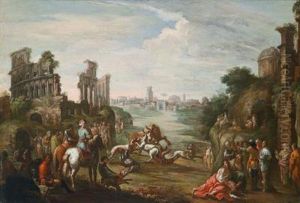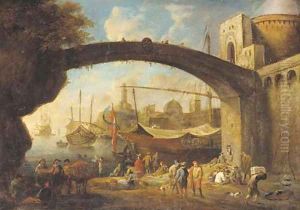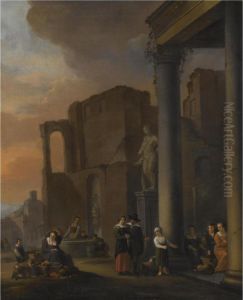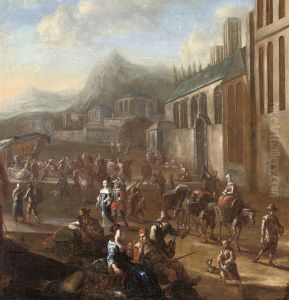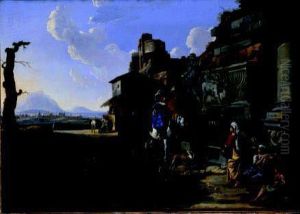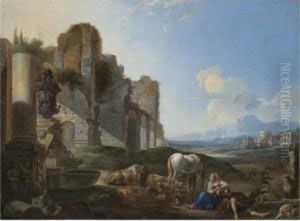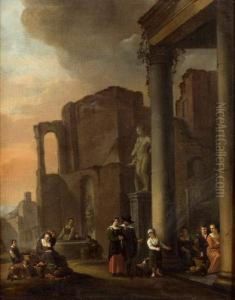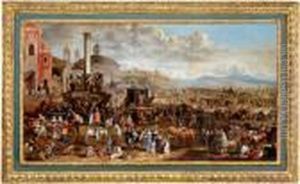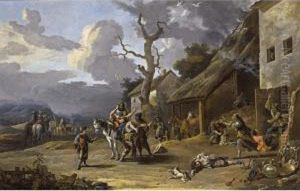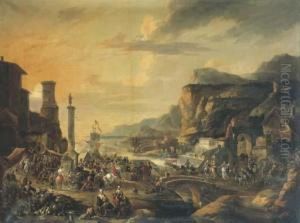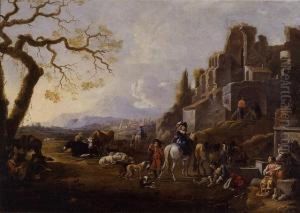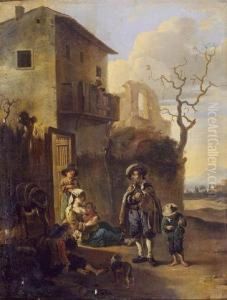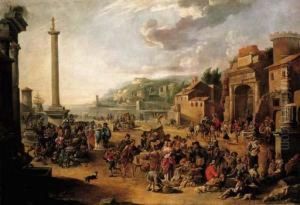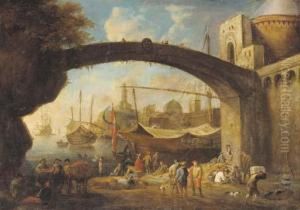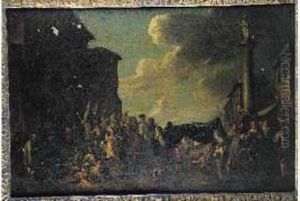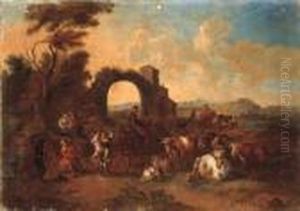Anton Goubau Paintings
Anton Goubau was a Flemish painter who was born in Antwerp in 1616. He is known for his Italianate landscapes and genre scenes that reflect the influence of the Bamboccianti, a group of mostly Dutch and Flemish artists working in Rome who painted scenes of everyday life.
Goubau embarked on his artistic career after becoming a master in the Antwerp Guild of Saint Luke in 1639. His early work showed the influence of prominent Flemish painters such as Peter Paul Rubens. However, Goubau's style evolved significantly after he traveled to Italy, where he stayed from 1644 to about 1650. During his time in Italy, he was particularly inspired by the Roman countryside and the work of the Bamboccianti, which is evident in his later paintings.
After returning to Antwerp, Goubau continued to incorporate Italianate elements into his work. He created landscapes filled with classical ruins and figures in contemporary dress, often depicting market scenes, festivals, and other aspects of daily life. His works are characterized by a warm palette, attention to detail, and the lively representation of figures.
Goubau's paintings were well-received, and he gained a reputation for his distinctive merging of Flemish and Italian styles. Despite the popularity of his works during his lifetime, Goubau did not establish a significant school of followers, and his works became less known after his death in 1698. Today, however, his paintings can be found in various art museums, and he is recognized for his contributions to the Flemish Baroque movement and his role in the development of genre painting.
